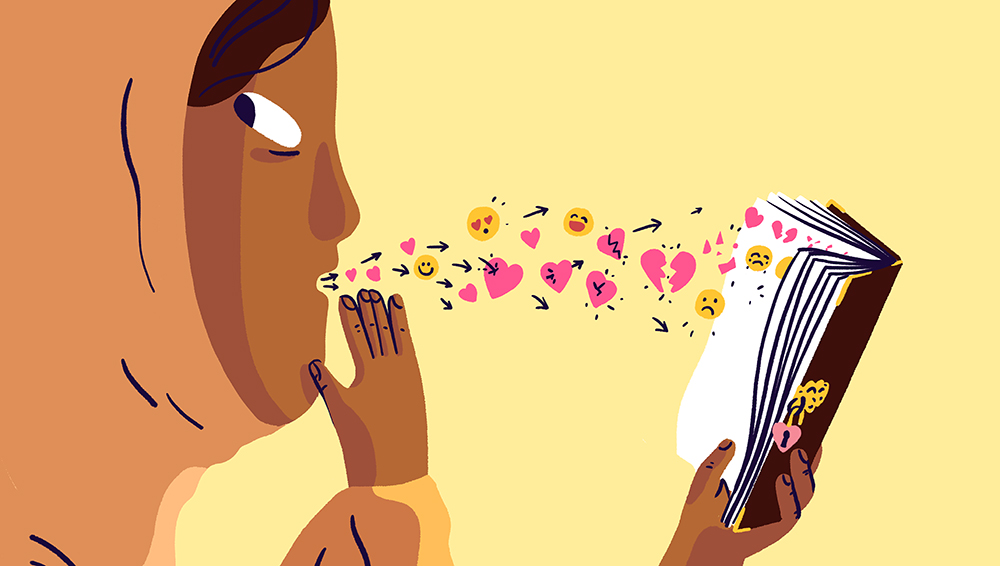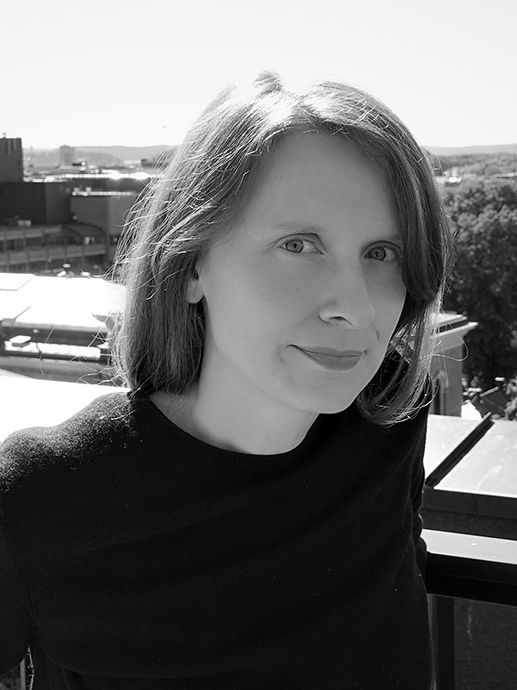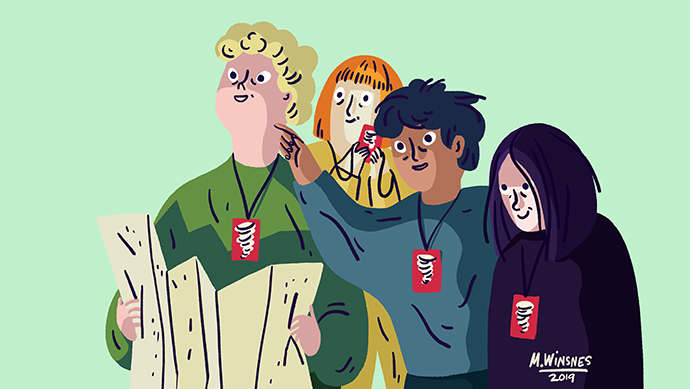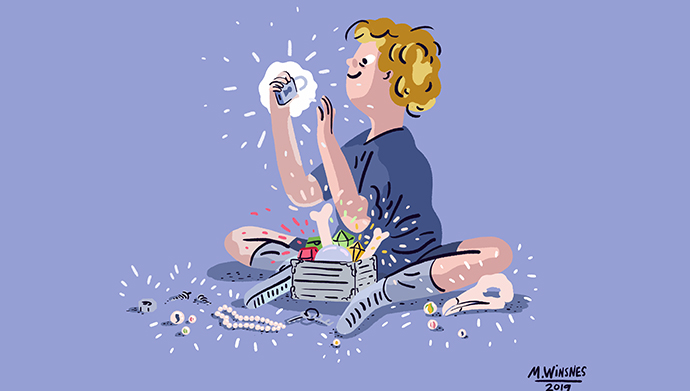What can children's experience with secrets tell us about surveillance?

Zeynep finds that having a secret can be relaxing. She uses a secret box or a diary "because this is a little bit as if I told it to someone. I write it into my secret diary and then it is a little bit shared.". Illustr: M. Wisnes (2019).
Øydis:"One secret was really not easy to keep. It almost burst out of me, but then it didn't burst out anyway."
Mareile:"How did you manage to keep the secret?"
Øydis:"I just tried not to move my mouth."
Øydis has just started primary school. She describes the secret almost as if it was a separate person with agency. She is one of many children that Mareile Kaufmann, Associate Professor at the Department of Criminology and Sociology of Law, has interviewed in a research project on the relationship between surveillance and secrecy.
-Children's relationship to surveillance and secrecy tells us something basic about what secrets are and how they change societies, Kaufmann says.
-It shows us that the secret is something more than just an attempt to avoid surveillance and disclosure. Secrets do something to us.
The criminology of the secret

Mareile Kaufmann researches digital technologies. She explores how we use them and how digitization affects surveillance. She is starting a project on the digitization of DNA evidence in the police work, which is funded by the European Research Council (ERC), and she has researched hacking, artificial intelligence and predictive analyses in police work.
- So why are you as a criminologist interested in how, and why, children have secrets?
- In the field of Criminology and Security Studies 'secrecy' is often presented as a problem. For example, states' use of secrecy and the concealing of information is problematized. The social scientist Georg Simmel, however, pointed out as early as in 1906 that the interplay between knowing and not knowing is fundamental to interpersonal relationships. If there was a society without anything hidden, then there would be nothing to be curious about, honest about or to find out. Simmel warned against looking at secrets as something exclusively negative or ethically problematic. Secrets, and keeping a secret, can also be experienced as something positive, exciting and rewarding, Kaufmann explains.

- Children are an interesting group to research when it comes to surveillance. On the one hand, children have the right to private life, which is enshrined in UN conventions, and in the Children's Act here in Norway. On the other hand, there are few other groups in society that are as much exposed to surveillance as children. Adults take care of them from the when they wake up until they go to bed, but they are also monitored by other children who, for example, tell them what is allowed and not allowed to do.
'Shhh - this is a secret'
Kaufmann interviewed children between the ages of 6 and 12, most of whom had just started school. She admits that interviewing children about secrets posed both, methodological and ethical challenges.

- Not only can it be difficult to find ways to start interviewing children about secrecy, but once they start talking about secrets you need to identify how to use that information. None of the children mentioned abuse or violence, but some talked about other things they thought were difficult and painful. It was not my role to pass this information on to parents or teachers, nor was it up to me to decide if the children wanted this to be addressed. There were children who wanted to share their secrets with me, but there were also those who did not want to share secrets. In those cases I stopped asking further questions.
What children's experiences of secrets can tell us about surveillance
- I arbeidet med digital overvåkning er det også viktig å utforske hvordan "ikke-digitale sammenhenger" er fortsatt med på å forme overvåkningdynamikker i samfunnet. Informasjon er viktig for alle, og alle kan være med på å forme informasjon. Strategier for å svare på og utfordre overvåkning, som hackere gjør på nettet, finner en også i andre sosiale sammenheng. I mine samtaler med barna fant jeg igjen at hemmeligheter er deres svar på sine opplevelser med overvåkning.

To give in return
- It was important for me to give something back to the children I interviewed, Kaufmann says.
She collaborated with illustrator Magnhild Winsnes and made an information booklet for children in English and German which explained the research findings. The children also got a sticker that they could adhere to anything they wanted in order to see how that message changes the object. The sticker reads "This is a secret." (Das ist ein Geheimnis / Dette er en hemmelighet).
- It was my way of conveying to children that secrets do something with us and the world around us.







